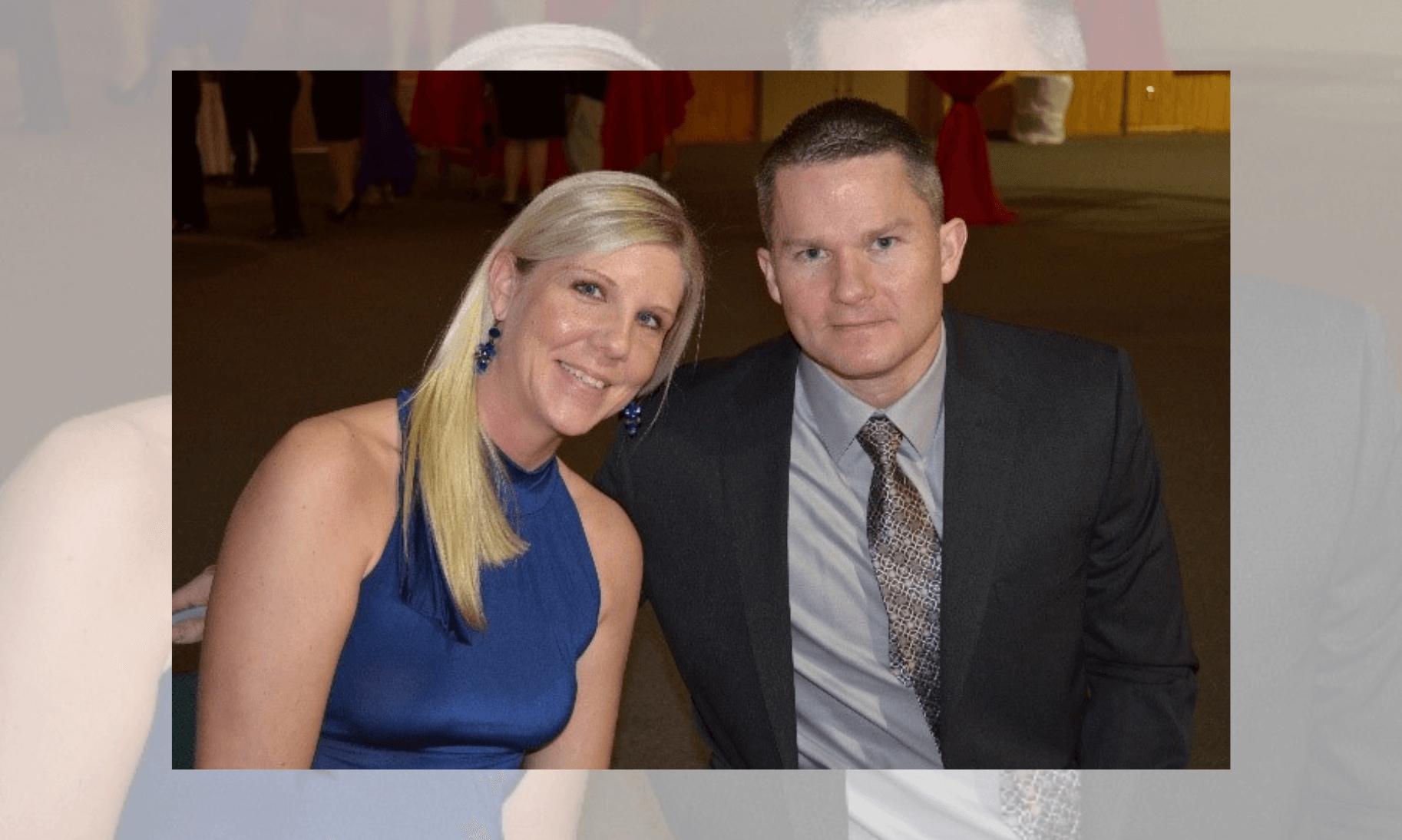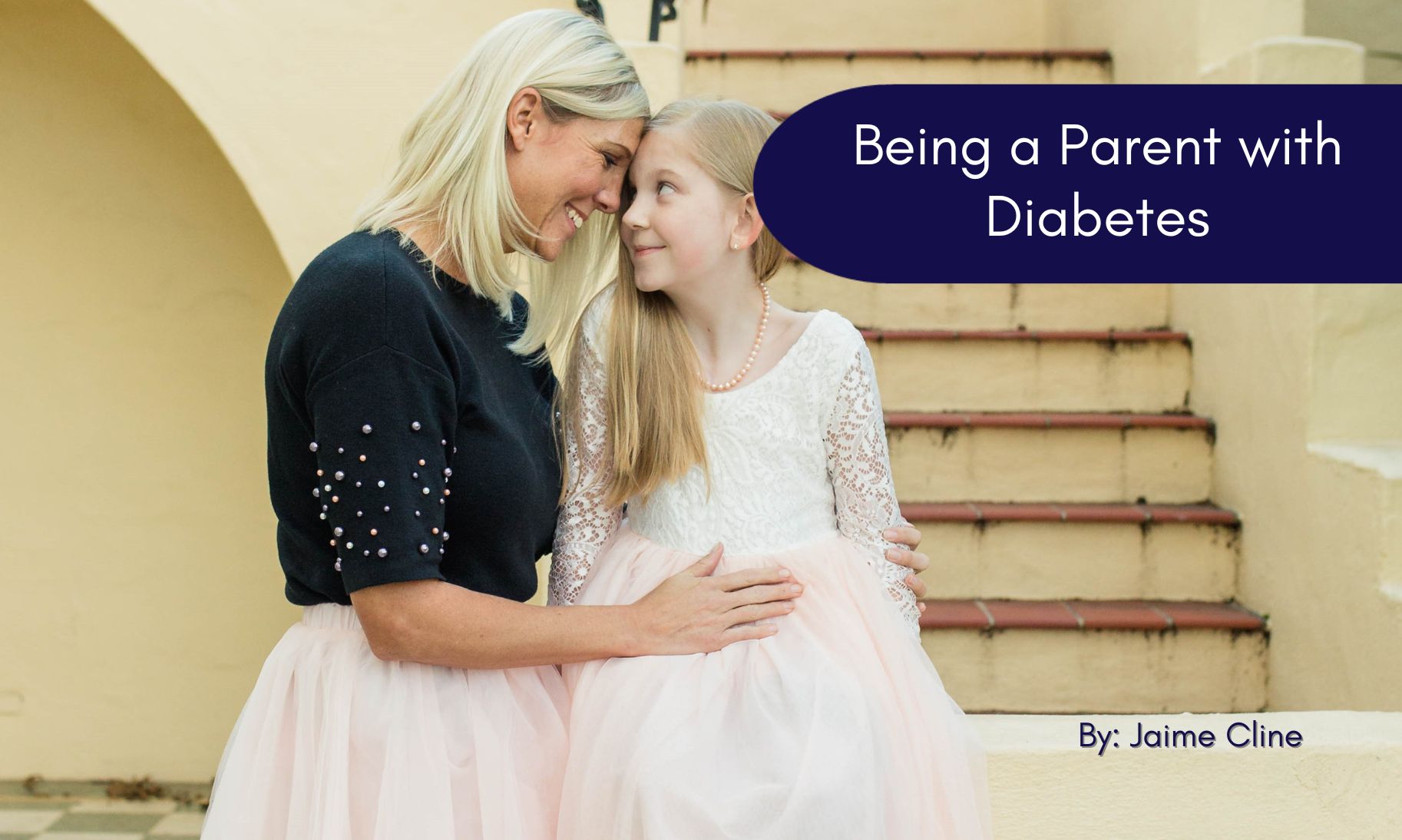Love + Diabetes: Through the highs & lows

Jaime Cline is a Sr. Customer Service Supervisor on our 24-Hour Technical Support Team. She uses her unique perspective as someone living with type 1 diabetes and using the MiniMedTM 780G system to motivate her work and connect with others who call in for support with their diabetes technologies.
James, Jaime’s husband, wanted to take a moment to share his perspective on living with and loving someone with diabetes. Jaime and James have been married for 12 years and Jaime says he is “the first man who did not make me feel like less of a person or a burden to him for my type 1 diabetes.” They both embody what it means to love someone through the highs and lows of life.
When I first met Jaime, she tried to hide the fact that she has diabetes. I guess she didn’t realize that being a detective made me pretty observant. Besides, it was 2007 and no one wore pagers anymore — that thing had to be an insulin pump! She wasn’t very good at hiding it, but I figured she would tell me when she was ready. When she finally told me, I could tell she was so nervous and was mentally preparing herself for the worst.
At that point, it was game over for me. It didn’t matter to me that she had diabetes. I was more amazed by her tenacity than the fact that she had to wear a little device all the time. I was more impressed with the fact that despite having diabetes, she didn’t let that limit her from doing anything she wanted to. If anything, it made her push herself harder and do more. The callouses on her fingers, the spots where she used to do shots all the time, and a pump alarming in the middle of the night didn’t bother me. So, she had to check her blood sugar and count carbs? So, she had to wear a pump that most of the time I didn’t even notice?
She could also hold her own at the shooting range and makes an awesome tortilla soup. I liked the sound of her laugh, the size of her heart, and how her face gives away every emotion she’s feeling. Diabetes didn’t matter to me — at that point she did.
Jaime is a ridiculously stubborn person by nature and it’s an adorable trait. I know she’s managed her diabetes by herself for a long time and sometimes it’s hard for her to let me “help.” I know that part of it is she wants to shield me from the drudgery of diabetes and so she very rarely talks about her basal rates, site changes, and other day-to-day things she needs to think about with me. I know that she wears the sensor for her continuous glucose monitor for my peace of mind. It’s a sacrifice she makes for me, so I know she’s safe when I am not there to protect her.
Recently she had a low glucose level — which thankfully is rare for her. She wasn’t very coherent and so I rushed to give her four of her liquid glucose packets to help raise her blood sugars. The easiest way I can describe those five to seven minutes where she was physically there but not really “there” is terrifying. I held my breath until I could see the light come back to her eyes and I could see her come out of it. I wondered if she was going to be sick for the rest of the day. I wondered if I gave her too much glucose or not enough? I ran through the million “what-ifs” in my head. What if I wasn’t there that morning? What if this had happened in the car on her way to work? What if this had happened and it was just our daughter, Callie, there to help? What if she didn’t wake up?
It’s almost as if a light switch flipped when she came out of the low. The first coherent words out of her mouth were, “Babe, don’t call EMS. I’m fine.” It was at that moment that I could exhale and she could take her diabetes back over from me. These are the moments when she radiates strength, a fierce perseverance and sometimes, a quiet resignation. It’s at those moments I am thankful for the advancements in technology that help keep Jaime safe, and give us both a bit more peace of mind.
Sometimes though, I can see the brave mask she wears slip. And I can see how much she hates it. How much it takes out of her. How much it scares her. Then I see her spine stiffen and she pushes through it. And in those moments, I hate diabetes.
After that low, Jaime got up and got ready for work. She was moving slowly, and I could tell that the low had taken a toll on her. But she had a meeting she couldn’t miss that morning and she asked me as she left the house, “I’ll be OK. Did you pick up my dry cleaning yesterday?”
Well, dang it.
The testimonial above relates an account of an individual’s experience using a Medtronic device. The account is genuine, typical and documented. However, this individual’s experience does not provide any indication, guide, warranty or guarantee as to the response or experience other people may have using the device. The experience other individuals have with the device could be different. Experiences can and do vary. Please talk to your doctor about your condition and the risks and benefits of Medtronic devices.
Important safety information: MiniMed™ 780G system with SmartGuard™ technology with Guardian™ 4 sensor
The MiniMed™ 780G system is intended for continuous delivery of basal insulin at selectable rates, and the administration of insulin boluses at selectable amounts for the management of type 1 diabetes mellitus in persons seven years of age and older requiring insulin as well as for the continuous monitoring and trending of glucose levels in the fluid under the skin. The MiniMed™ 780G system includes SmartGuard™ technology, which can be programmed to automatically adjust insulin delivery based on the continuous glucose monitoring (CGM) sensor glucose values and can suspend delivery of insulin when the sensor glucose (SG) value falls below or is predicted to fall below predefined threshold values.
The Medtronic MiniMed™ 780G system consists of the following devices: MiniMed™ 780G insulin pump, the Guardian™ 4 transmitter, the Guardian™ 4 sensor, One-press serter, the Accu-Chek™ Guide Link blood glucose meter, and the Accu-Chek™ Guide test strips. The system requires a prescription from a healthcare professional.
The Guardian™ 4 sensor is intended for use with the MiniMed™ 780G system and the Guardian 4 transmitter to monitor glucose levels for the management of diabetes. The sensor is intended for single use and requires a prescription. The Guardian™ 4 sensor is indicated for up to seven days of continuous use.
The Guardian™ 4 sensor is not intended to be used directly to make therapy adjustments while the MiniMed™ 780G is operating in manual mode. All therapy adjustments in manual mode should be based on measurements obtained using a blood glucose meter and not on values provided by the Guardian™ 4 sensor. The Guardian™ 4 sensor has been studied and is approved for use in patients ages 7 years and older and in the arm insertion site only. Do not use the Guardian™ 4 sensor in the abdomen or other body sites including the buttocks, due to unknown or different performance that could result in hypoglycemia or hyperglycemia.
WARNING: Do not use the SmartGuard™ feature for people who require less than 8 units or more than 250 units of total daily insulin per day. A total daily dose of at least 8 units, but no more than 250 units, is required to operate in the SmartGuard™ feature. |



